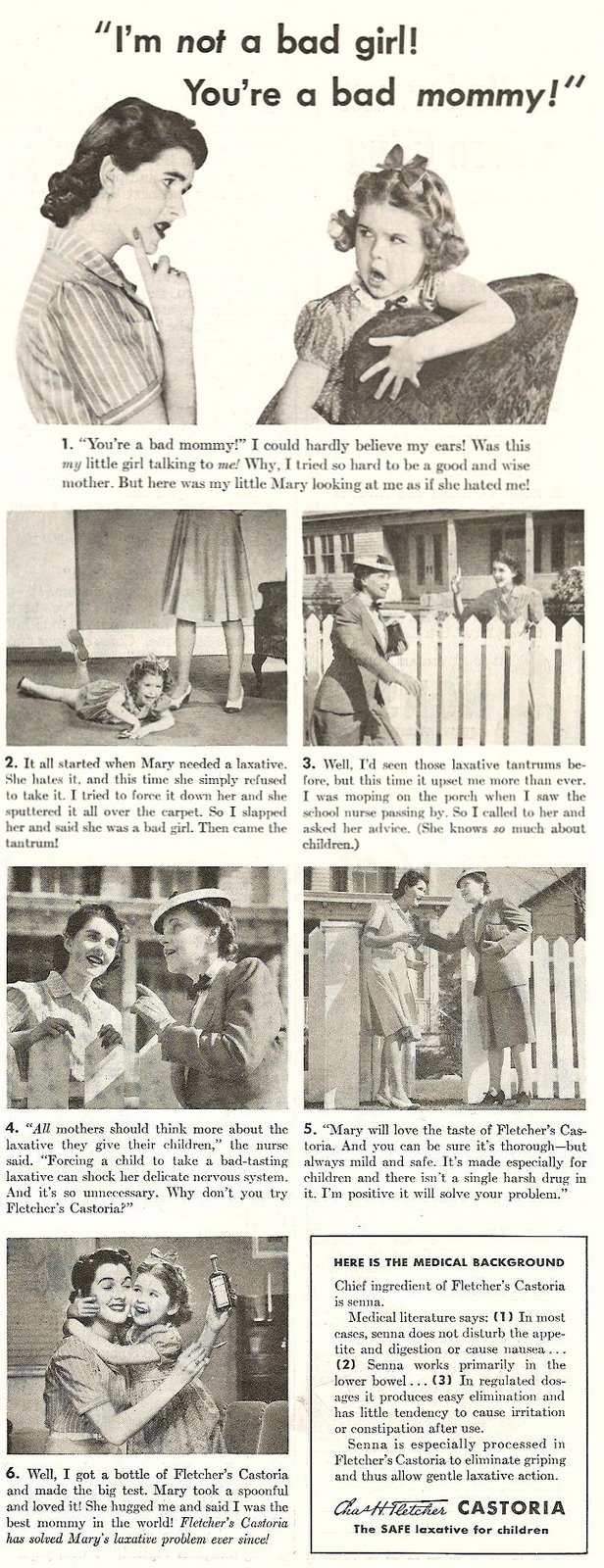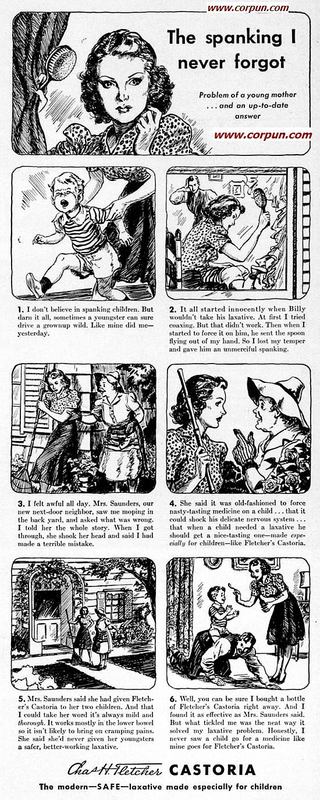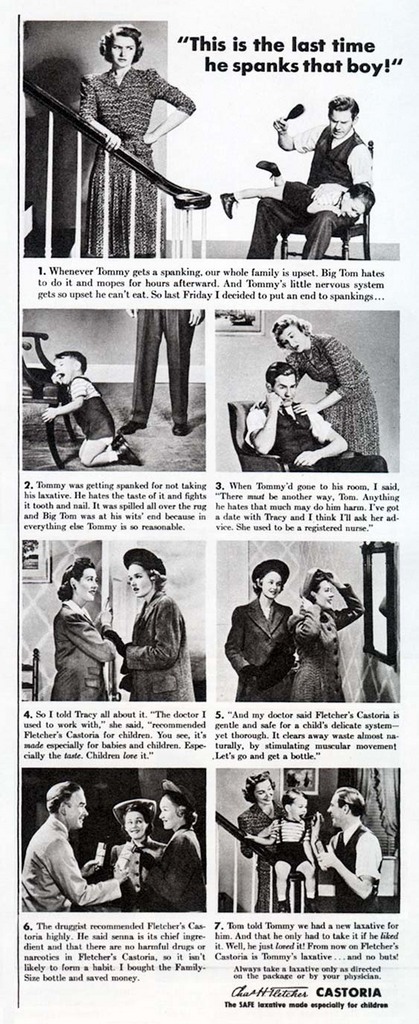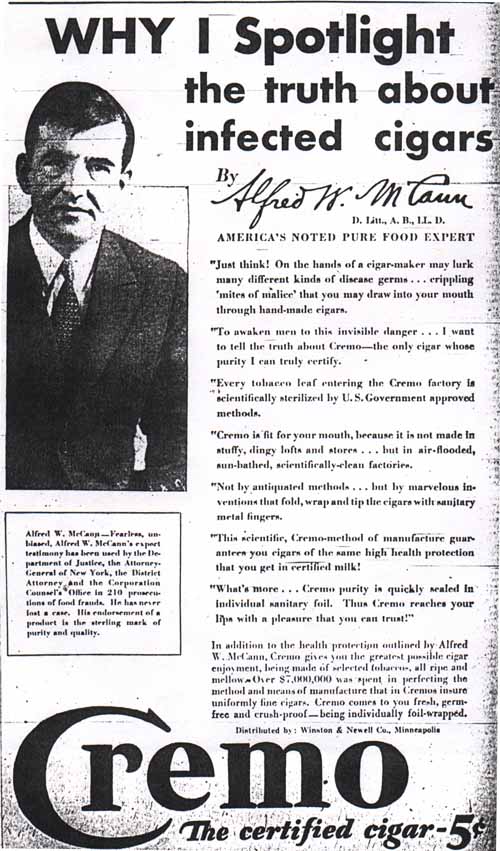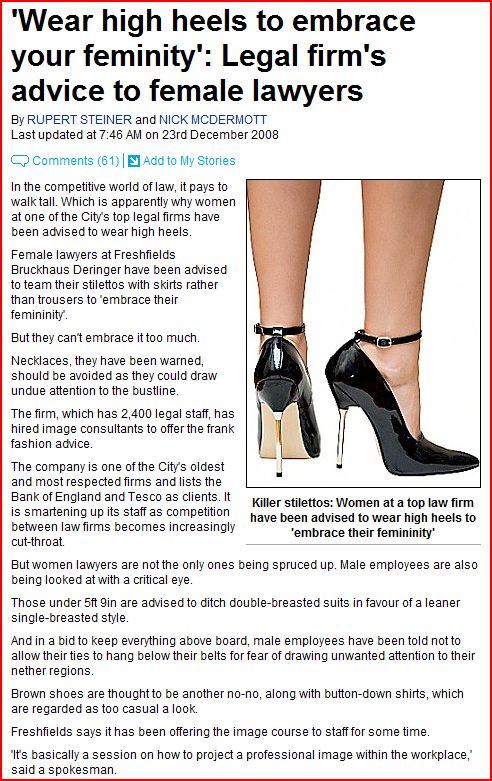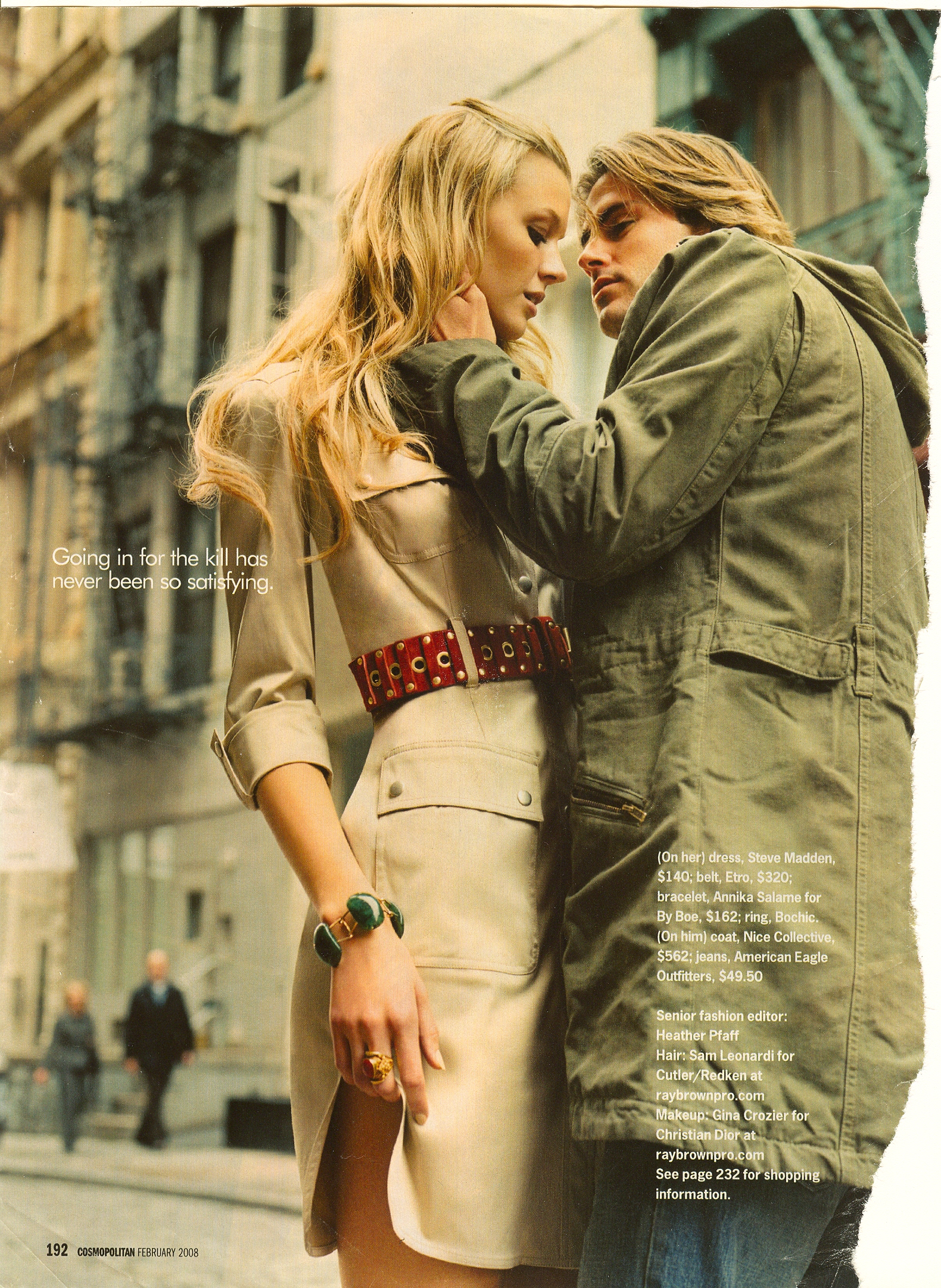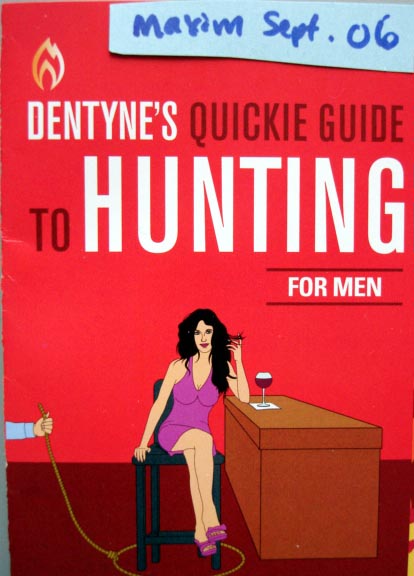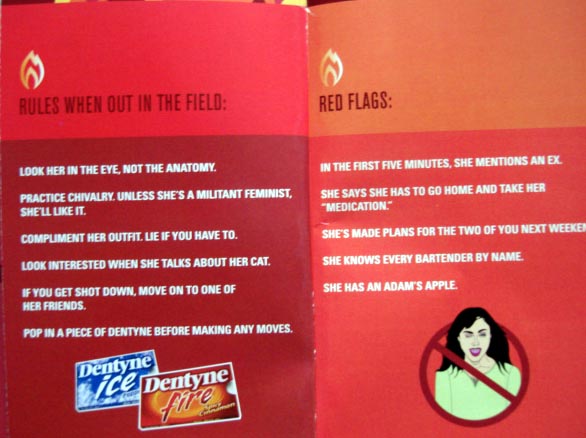Ben O. sent us this 1941 ad for Fletcher’s Castoria (found at I’m Learning to Share), in which mothers are warned (by a bratty kid) that they better give their children Fletcher’s laxatives or their children will hate them:
Text from section 2:
It all started when Mary needed a laxative. She hates it, and this time she simply refused to take it. I tried to force it down her and she splattered it all over the carpet. So I slapped her and said she was a bad girl. Then came the tantrum!
I’d say slapping her daughter is more of an indication of what type of mother she is than which laxatives she chooses, but whatever. Apparently the company liked to use corporal punishment in its ads; here are some more examples (both found at Corpun). In this first one, we learn that even parents who don’t believe in spanking may be driven to it if they use the wrong laxative (in section 2, she gives him an “unmerciful spanking”):
Text from sections 1 and 2:
I don’t believe in spanking children. But darn it all, sometimes a youngster can sure drive a grownup wild. Like mine did me–yesterday. It all started innocently when Billy wouldn’t take his laxative. At first I tried coaxing. But that didn’t work. Then when I started to force it on him, he sent the spoon flying out of my hand. So I lost my temper and gave him an unmerciful spanking.
From section 1:
Whenever Tommy gets a spanking, our whole family is upset. Big Tom hates to do it and mopes for hours afterward. And Tommy’s little nervous system gets so upset he can’t eat. So last Friday I decided to put an end to spankings…
Fletcher’s Castoria: the way to digestive and family harmony. Without it, you might end up slapping the kids around (though I have to say, that girl at the top would probably test to the utmost my opposition to violence).
Just a question: I’m not a parent, but I don’t hear my friends talking about giving their kids laxatives all the time, and I don’t remember being forced to take them as a kid (though I do remember us forcing a horse to drink a lot of castor oil once). Was this just a health fad at the time that people thought kids needed that has fallen out of favor? Did kids in the ’40s have some unique digestive problems we’ve, um, eliminated since then? Or do my friends’ kids go around constipated all the time because they don’t know to make them take senna laxatives?
Thanks again, Ben!
NEW! Sarah N. sent us another example of an add that implies laxatives lead to happier moms and better family lives:
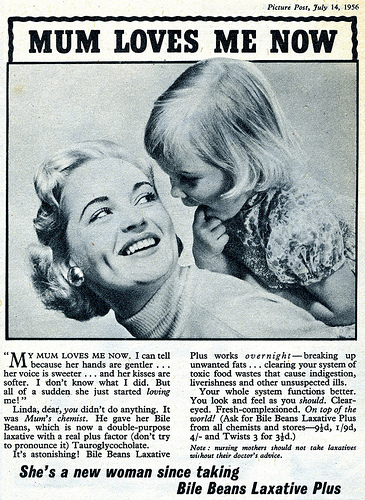
Part of the text:
“My mum loves me now. I can tell because her hands are gentler…her voice is sweeter…and her kisses are softer. I know know what I did. But all of a sudden she just started loving me!”
Linda, dear, you didn’t do anything. It was Mum’s chemist. He gave her Bile Beans…

